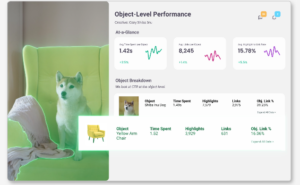By Matthew Morgan, Managing Director, tmwi
As the light at the end of the lockdown tunnel grows ever brighter now is the time for businesses to begin to prepare for a post-pandemic life and ensure they are doing enough to make the most of the accelerated change we have seen on all fronts over the past year.
A shift in media consumption habits is perhaps the most obvious change that the pandemic has precipitated: VOD, audio and gaming have all witnessed a surge in popularity, as have streaming and subscription TV, while there’s been a revived appetite for instant news on social media. But a general change in consumer behaviour has also taken hold.
As research shows 70% of internet users are using their smartphones more since the Covid-19 outbreak, it’s clear many people have had their eyes opened to a number of new digitally-driven habits. Some people will drop these new behaviours as soon as there is a sniff of freedom, but for others they will stick long-term and become preferences rather than a reaction to circumstance.
Supermarkets have shifted a significant amount of investment into their home delivery services, and those retailers who are not developing an online infrastructure need to be prioritising that to ensure they are ahead of the game when lockdown eases. But all the infrastructure in the world will be no help if retailers do not understand their customers and the audiences to whom they are advertising. Many brands have traditionally relied on the physical stores to do much of their promotional work for them, with in-store promotions and deals on the stockist’s website, but they are now having to create a direct relationship with their customers instead.
While existing DTC retailers whose heritage lies in direct sales will have the advantage of a deeper understanding of the behaviour of their customers, more offline brands should not be disheartened. While it is an unenviable task for any CMO to have been thrown off course with this rapidly and continually changing behaviour, the data to guide them is there if they know where to look.
In recent months we have been working with clients such as MG and Furniture Village which has seen new audiences come to their sites, and our always-on analytics enable us to really drill down and understand who these people are, the stage they are at in the purchasing funnel, and how we can best respond to that position in such a way that they complete their journey with these brands.
The key is to make a brand discoverable to these additional online shoppers. Where we are left with little choice but to shop online, many people will be searching for products they would previously only ever have purchased in person from a bricks and mortar store. It is therefore vital that retailers look at the entire customer journey, and don’t just begin at the point at which the customer discovers them.
Rather than simply waiting for people to land on their site so they can open the dialogue and begin gathering first party data, retailers must start further back in the journey, making their products discoverable using SEO, and then continue to make every touchpoint count. These may not be the touchpoints they are used to but they must align them to a potentially new and slightly different – but equally important – audience.
Sophisticated data analytics must be combined with spot-on messaging, and it is here that personalisation will pay dividends. By monitoring customer sentiment and understanding what is important to them, advertisers can refine their messaging to create a deeper connection, drive a more effective ROI and, ultimately, convert a new customer into a loyal, returning visitor.
If the pandemic wasn’t having a big enough impact on business as it is, many advertisers are also contending with the imminent end of cookies, which will remove a huge swathe of their existing methods of reaching potential customers. So for those businesses it makes sense to kill two birds with one stone and have a complete overhaul of their intelligent and measurement processes that help them understand their customers.
It won’t be easy but it will be a valuable lesson that will future-proof their business and ensure they are fully prepared for both a post-Covid and a post-cookie future.









